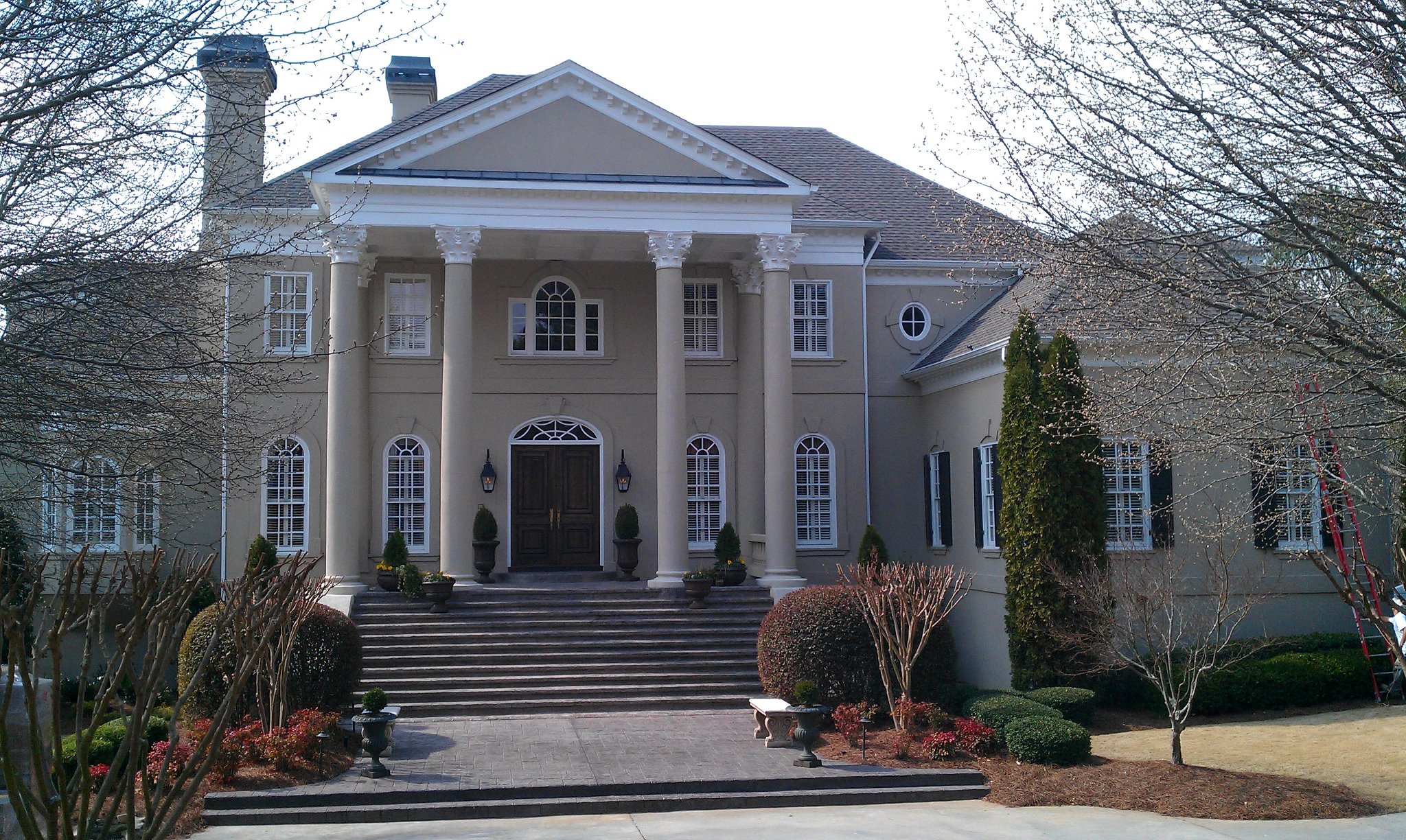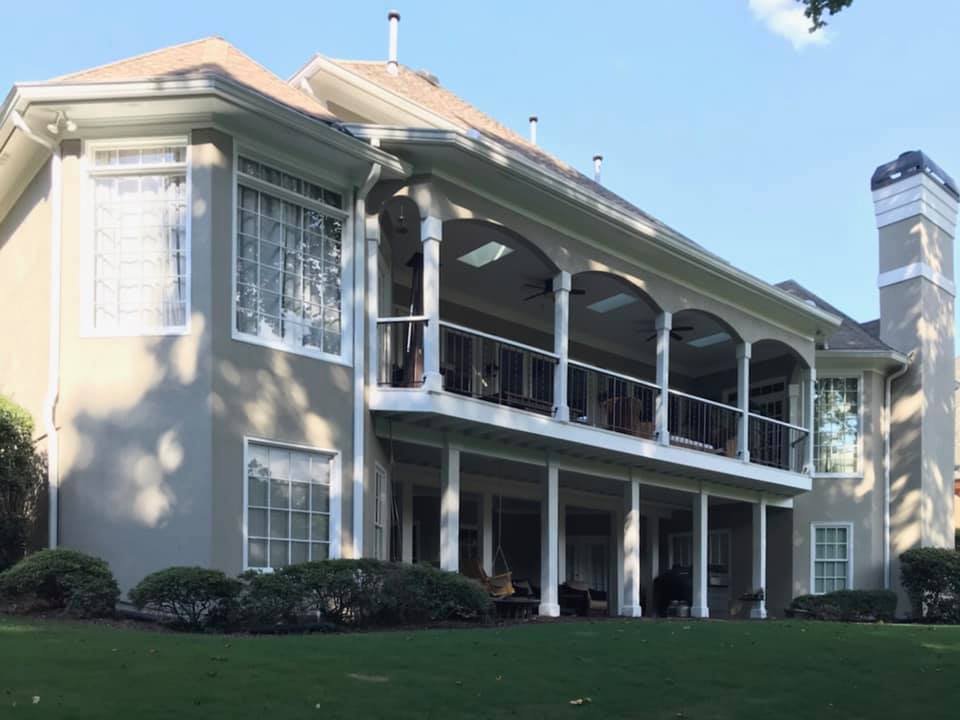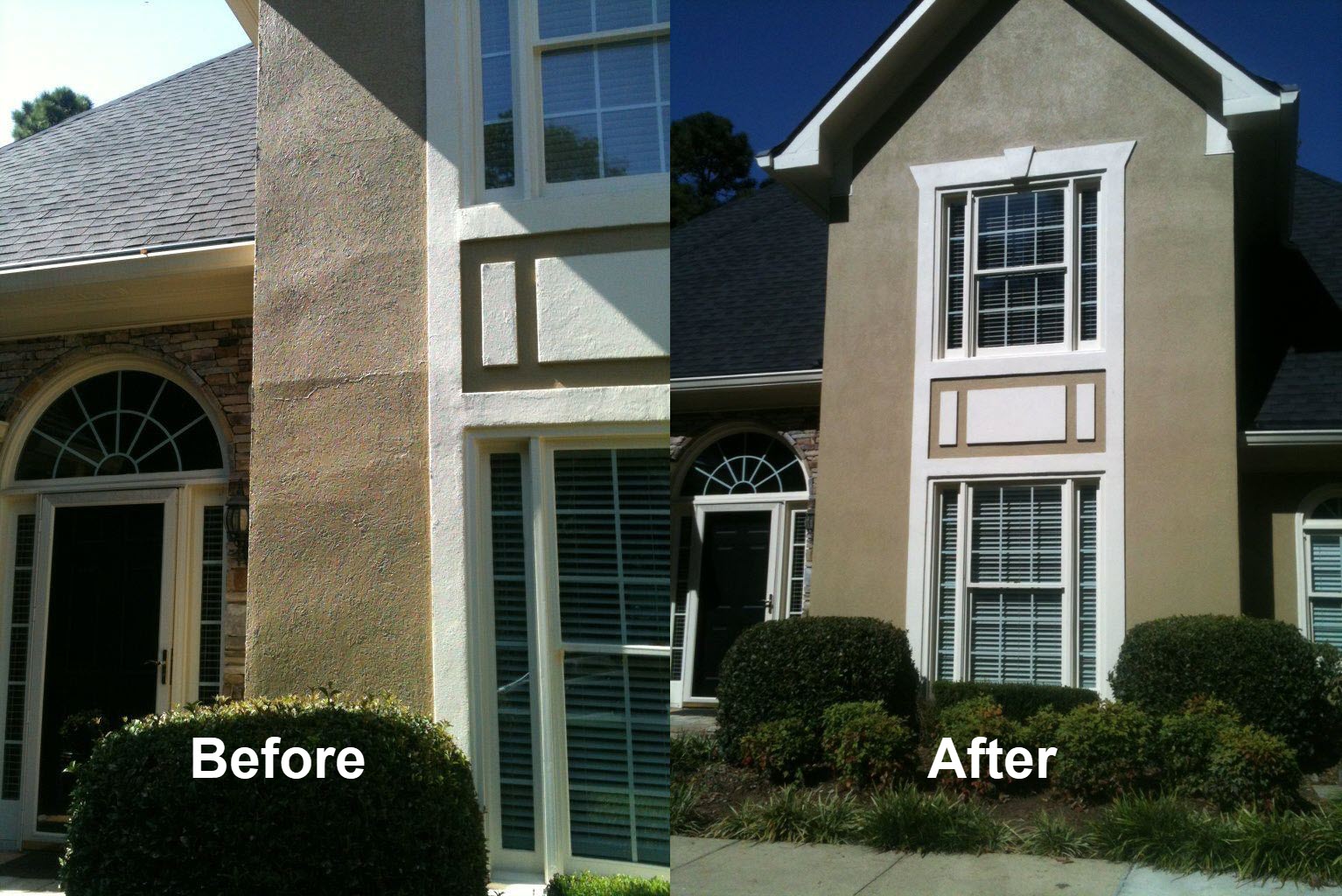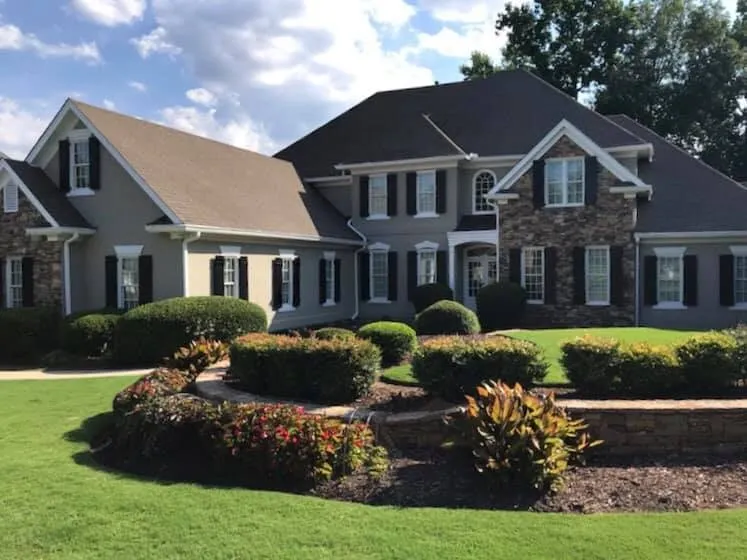Update Aging Sealantsin Vinings GA
Stop Leaks Before They Become Costly Issues
We Are Locally Owned & Operated For Over 24 Years
We Serve Businesses In And Around The Following Cities:
About Stucco Sealant Replacements in Vinings, Georgia
Stucco Sealant Replacement in Vinings Georgia
The lush and charming community of Vinings, Georgia, is home to a diverse array of architectural styles, each with its own unique challenges and requirements for maintenance. Among these, the use of stucco, EIFS, and Dryvit materials stands out due to their aesthetic appeal and practical benefits. Over time, as the elements exert their influence, the need for effective maintenance solutions, such as stucco sealant replacement, emerges as a critical component in preserving the longevity and appearance of these materials. The services provided by Advanced Stucco Repair offer vital insights and solutions for both residential and commercial properties, ensuring that these buildings maintain their charm and functionality.
Strolling through Vinings, one cannot help but admire the seamless blend of historical buildings and modern constructions. This harmony is often achieved through meticulous care and maintenance, particularly in structures using stucco and related finishes. Stucco, EIFS, and Dryvit systems not only enhance the visual appeal of buildings but also provide significant protection against the elements. Yet, just like any other aspect of construction, these materials require regular attention to ensure their efficacy, particularly when it comes to the integrity of the sealants used.
In essence, stucco sealant replacement is a crucial process in maintaining the overall health of a structure. Sealants serve as the first line of defense against moisture infiltration, a common issue in the humid climate of Georgia. When these sealants begin to fail, they compromise not only the aesthetic appeal but also the structural integrity of buildings. Recognizing the signs of wear and engaging in timely replacement can prevent moisture-related damages, such as mold growth and structural weakening. With local expertise, Advanced Stucco Repair offers reliable solutions, equipped to address the specific needs of both residential and commercial properties in Vinings.
The Process of Stucco Sealant Replacement
The process of replacing stucco sealants involves a series of meticulous steps to ensure that the structural integrity and aesthetic value of buildings are maintained. First, a thorough inspection is conducted to assess the current condition of the stucco surfaces and existing sealants. This step is crucial in identifying areas where the sealant has failed or is showing signs of deterioration. Common indicators include visible cracks, peeling, or discoloration around the joints and seams. Advanced Stucco Repair employs state-of-the-art techniques to diagnose such issues comprehensively.
Once areas needing attention are identified, the next step involves the careful removal of the old or damaged sealant. This is a delicate task requiring precision and expertise, as improper removal can cause damage to the stucco or EIFS surfaces. Professionals like those at Advanced Stucco Repair use specialized tools to ensure that the old sealant is removed without affecting the underlying material. This thorough removal is essential to ensure that the new sealant adheres properly and provides a watertight seal.
After the old sealant is removed, the surfaces are cleaned and prepped for the application of new exterior sealants. This preparation often involves cleaning the surfaces of any debris or contaminants that might interfere with the adhesion of the new sealant. The choice of sealant is another critical component in this process. Modern advancements offer a variety of new exterior sealants designed to provide improved durability and protection against Vinings' climatic conditions.
Application of the sealant is conducted with meticulous care, following manufacturer guidelines to ensure maximum efficacy. The sealant is not just applied superficially; professionals focus on filling every gap and seam thoroughly, particularly around windows, doors, and other joints that are prone to moisture infiltration. Ensuring complete coverage in these areas is vital for long-term protection.
Finally, a quality check is conducted post-application to ensure that the sealant replacement has been carried out to the highest standards. This involves inspecting the newly sealed joints for consistency and integrity, ensuring that the building's aesthetic appeal is restored and its protection against moisture is solidified.
Benefits of Stucco Sealant Replacement
The advantages of replacing stucco sealants go beyond mere aesthetics. First and foremost, the primary benefit is enhanced moisture protection. Moisture is a notorious culprit for causing significant structural damage, particularly in regions like Vinings where humidity can be high. Properly applied sealants protect against water intrusion that can lead to mold growth, rot, and other structural issues, thus safeguarding the building's longevity.
Another significant benefit is increasing the energy efficiency of a building. Sealing joints and openings effectively prevents air leaks, resulting in improved insulating properties. This can lead to a noticeable reduction in energy costs, as heating and cooling systems do not have to work as hard to maintain comfortable indoor environments. Advanced Stucco Repair’s precise application ensures that this energy-efficient benefit is fully realized.
For property owners in Vinings, maintaining curb appeal is another compelling reason to engage in timely sealant updates. Stucco, EIFS, and Dryvit systems are chosen for their aesthetic appeal, and deteriorating sealants can significantly detract from a property’s visual allure. By ensuring that sealants are replaced as needed, the façade of a home or commercial building remains appealing and presentable.
In a business context, employing the services of a professional like Advanced Stucco Repair can enhance the perception of reliability and quality. For commercial properties, the exterior serves as the first impression for customers and clients. Ensuring that this impression is positive by maintaining an attractive, well-sealed façade can be beneficial in attracting and retaining business.
Real-World Applications and Insights
Incorporating real-world applications of stucco sealant replacement can highlight the tangible benefits for properties in Vinings. For instance, a historic church in the area recently underwent a comprehensive sealant update as part of its restoration project. The project faced challenges due to the building's age and the previous materials used, which were not up to current standards. Advanced Stucco Repair stepped in to guide the sealant replacement process, using high-quality, modern exterior sealants and addressing the unique concerns of an aging structure.
This careful intervention not only enhanced the building's resistance to moisture but also respected and preserved its historical essence. Visitors to the church now admire its restored beauty, not fully aware of the critical role that new sealants play in maintaining its integrity and appearance. Such applications showcase the importance of expert intervention in managing the delicate balance between preservation and modernization.
Another notable example involves a modern commercial complex that experienced recurring moisture issues due to failing sealants. This led to increased maintenance costs and disruptions. Recognizing the severity of this issue, the building management engaged Advanced Stucco Repair to replace the faulty sealants. By employing a systematic and well-planned approach, the experts successfully mitigated the issues, resulting in improved internal environments and significant cost savings in the maintenance budget.
These examples underscore the importance of proactive maintenance. Regularly assessing and replacing sealants not only contributes to building longevity but also offers practical solutions to recurring issues, ultimately enhancing property value and user satisfaction. Advanced Stucco Repair's tailored solutions ensure that each project is approached with the individual property's needs in mind, integrating local expertise with comprehensive service.
Maintaining a building in Vinings involves more than aesthetic upkeep; it also demands a commitment to preserving functional integrity. Whether for a cherished residential property or a bustling commercial structure, engaging in timely stucco sealant replacement and updates is integral to achieving this goal. Advanced Stucco Repair’s extensive knowledge and meticulous attention to detail make it the ideal partner for residents and business owners alike in this beautiful Georgia community.
For those journeying through the historic and modern terrains of Vinings, the striking architecture often tells silent stories of maintenance and care. Each property, old or new, stands as a testament to the importance of maintaining its health through thoughtful interventions like stucco sealant replacement. By recognizing these needs, and with the expertise of firms like Advanced Stucco Repair, buildings continue to stand strong, enhancing the community's charm and character for years to come.
Stucco Sealant Replacements Gallery



Call Us Today to receive your Free Quote for
Stucco Sealant Replacement in Vinings
Serving: Vinings, Georgia

About Vinings, Georgia
Early on, Vinings was known as Crossroads, and then Paces, after Hardy Pace, circa 1830. He operated Pace's Ferry across the Chattahoochee River, in this area between Atlanta, Buckhead, and Smyrna. Paces Ferry Road is still the main east–west road through Vinings. The Western and Atlantic Railroad laid rail tracks from Chattanooga, Tennessee to Atlanta in the 1840s. Vinings became a construction station for the railroad, and was inadvertently named for William H. Vining, as he worked on the railroad construction of "Vining's Bridge" laying tracks in the area. The railroad is still state-owned as it was from the beginning, and is now leased to CSX.
The Union Army occupied the Vinings area during Sherman's Atlanta Campaign of the American Civil War in 1864 and the subsequent March to the Sea. Pace's home, which had been used as a hospital for Union troops, was destroyed in the process. Vinings recovered after the war, as Governor Brown leased the railroad to Vinings to bring passengers to the springs and pavilions built to encourage a respite from the reconstruction of Atlanta. Vinings was officially recognized as a community in 1904, the same year the one-lane bridge was constructed across the Chattahoochee River. The town was never incorporated, though it had been discussed whether it should become a "township".
The Vinings Historic Preservation Society seeks to keep the town's history alive.
Vinings is located at 33°51′58.9″N 84°27′57.85″W / 33.866361°N 84.4660694°W. According to the United States Census Bureau, the CDP has a total area of 3.3 square miles (8.5 km), of which 3.2 square miles (8.3 km) is land and 0.1 square miles (0.26 km), or 3.34%, is water.
| Census | Pop. | Note | %± |
|---|---|---|---|
| 1990 | 7,417 | — | |
| 2000 | 9,677 | 30.5% | |
| 2010 | 9,734 | 0.6% | |
| 2020 | 12,581 | 29.2% | |
| U.S. Decennial Census 1850-1870 1870-1880 1890-1910 1920-1930 1940 1950 1960 1970 1980 1990 2000 2010 2020 | |||
Vinings was first listed as a CDP in the 1990 U.S. Census.
| Race / Ethnicity (NH = Non-Hispanic) | Pop 2000 | Pop 2010 | Pop 2020 | % 2000 | % 2010 | % 2020 |
|---|---|---|---|---|---|---|
| White alone (NH) | 7,805 | 5,913 | 6,459 | 80.66% | 60.75% | 51.34% |
| Black or African American alone (NH) | 1,155 | 2,679 | 4,049 | 11.94% | 27.52% | 32.18% |
| Native American or Alaska Native alone (NH) | 17 | 12 | 13 | 0.18% | 0.12% | 0.10% |
| Asian alone (NH) | 357 | 402 | 689 | 3.69% | 4.13% | 5.48% |
| Native Hawaiian or Pacific Islander alone (NH) | 2 | 6 | 3 | 0.02% | 0.06% | 0.02% |
| Other race alone (NH) | 15 | 38 | 62 | 0.16% | 0.39% | 0.49% |
| Mixed race or Multiracial (NH) | 107 | 182 | 476 | 1.11% | 1.87% | 3.78% |
| Hispanic or Latino (any race) | 219 | 502 | 830 | 2.26% | 5.16% | 6.60% |
| Total | 9,677 | 9,734 | 12,581 | 100.00% | 100.00% | 100.00% |
As of the census of 2000, there were 9,677 people, 5,227 households, and 1,740 families residing in the CDP. The population density was 3,039.2 inhabitants per square mile (1,173.4/km). There were 5,670 housing units at an average density of 1,780.8 per square mile (687.6/km). The racial makeup of the CDP was 81.97% White, 12.09% African American, 0.19% Native American, 3.69% Asian, 0.03% Pacific Islander, 0.83% from other races, and 1.21% from two or more races. Hispanic or Latino of any race were 2.26% of the population.
There were 5,227 households, out of which 11.5% had children under the age of 18 living with them, 26.3% were married couples living together, 5.2% had a female householder with no husband present, and 66.7% were non-families. 43.3% of all households were made up of individuals, and 2.4% had someone living alone who was 65 years of age or older. The average household size was 1.84 and the average family size was 2.61.
In the CDP, the population was spread out, with 10.8% under the age of 18, 15.5% from 18 to 24, 50.9% from 25 to 44, 16.6% from 45 to 64, and 6.1% who were 65 years of age or older. The median age was 30 years. For every 100 females, there were 92.5 males. For every 100 females age 18 and over, there were 91.8 males.
The median income for a household in the CDP was $88,876, and the median income for a family was $105,121. Males had a median income of $78,685 versus $46,315 for females. The per capita income for the CDP was $61,068. About 3.3% of families and 5.2% of the population were below the poverty line, including 4.1% of those under age 18 and 3.9% of those age 65 or over.
Vinings residents attend schools in the Cobb County School District. Residents are zoned to Teasley Elementary School, Campbell Middle School, and Campbell High School.
Vinings is unincorporated, and is therefore under the jurisdiction of Cobb's county commission and other public services. After the success of Sandy Springs, there was discussion and at least one public meeting on whether the town should also incorporate as a "city" (the only type of municipality in Georgia). With residents evenly split, there was no consensus, and the idea was shelved mainly due to concerns about potential property tax increases.
However, some expressed optimism that the Georgia Township Act might allow it to become a "township", equivalent in function to a village in many other U.S. states. This would allow it control of zoning and other land uses (the major dispute with the county), and as written would cap additional property taxes at a half mill (0.5 per mille, or 50¢ per $1000 annually). As of 2013, the bill has not been reintroduced in the Georgia General Assembly.
The proposed boundaries were Interstate 285 along the northwest side, Interstate 75 at the northeast end, the Chattahoochee River on the southeast side, and Atlanta Road (old US 41 until Cobb Parkway was built in the 1950s) at the southwest end.
